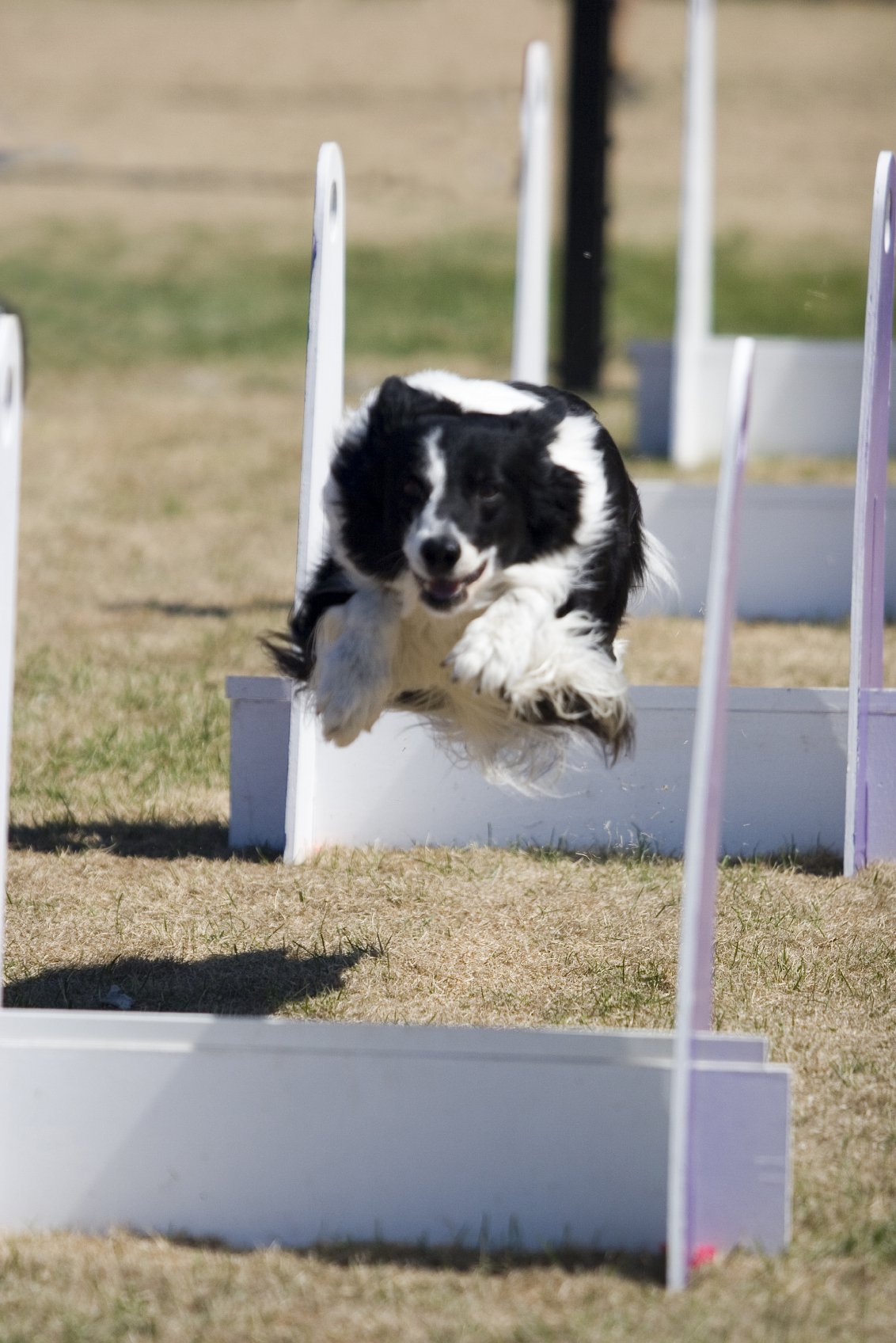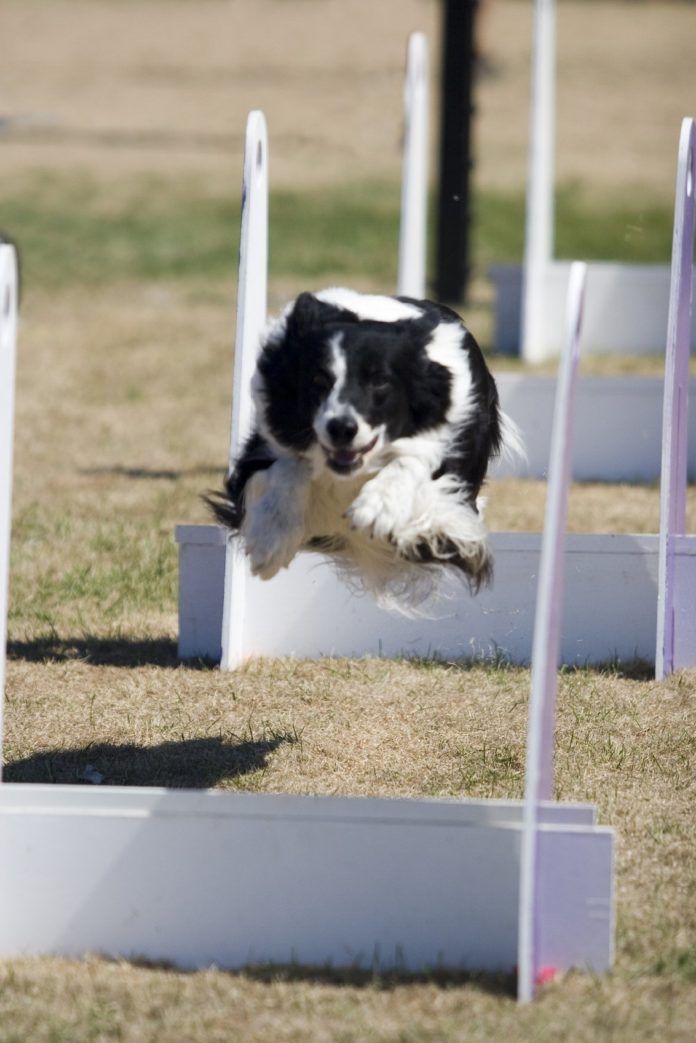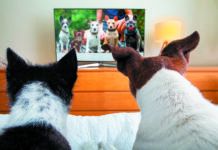It’s easy for us to fill in any free time we might have. We can read, throw a dinner party, go see a good movie, shop. Dogs have sort of the opposite problem — tons and tons of free time and not a lot of ways to spend it. Think about it. Outside of the 14 or so hours each day that they sleep and the hour or two that you walk them in a 24-hour period, there’s not a lot going on. They don’t have much of an opportunity to while away the time other than by lying around. They wait on your every move.
Want to add some spice to their life and intensify the bond between you and your dog? Consider one of these nine activities. It’ll require some time commitment, driving your dog to and from “class” if nothing else. But oh, how enriched his life will become! And the added fun may even attenuate his tendency to [insert annoying habit here]. Like they say, a tired dog is a happy dog.
Agility classes. The great thing about agility classes is that they can work for pretty much any type of dog, although breeds that tend to thrive on agility training include border collies, Australian shepherds, Parson Russell terriers, and poodles. Dobermans, too, are often crazy about it. They love jumping through hoops, doing figure eights, walking a see-saw, and making their way through chutes and tunnels. There are weave poles, tire jumps, and other hurdles, too.
Rally-O. The “O” is for obedience, and rally-o classes often prove enjoyable for dogs who like to work with their owners — sporting group breeds like Labs and golden retrievers. They turn a dog and his owner into a precise, well-oiled machine. At signs posted along the way, you and your pet do whatever you’re instructed to do: take a step backward, turn 90 degrees, slow your pace, weave through some cones, and so on. It makes training a lot more interesting than “Sit” and “Stay,” and just getting the dog out of the house with you is environmental enrichment in itself.
Frisbee Canine Disc Competitions. Think border collies and all types of retrievers. Of course, you can always toss a Frisbee to your dog in the backyard, but putting him (and you) into competitive action takes the play up a notch — or two.
Flyball. Any dog who likes to run and who likes balls will like flyball, especially if he has energy to burn and doesn’t mind other dogs and a lot going on at once. It’s set up as hurdles placed about 10 feet apart from each other. The dogs comprise a kind of relay team, perhaps four to a team. The first dog jumps all the hurdles, then steps on a spring-loaded pedal that sits on top of a box. That releases a ball that the dog catches. She then turns around and races through the hurdles in reverse. Then the next dog is up. It’s a fun frenzy, with the owners goading the dogs through their paces as fast as possible.


Istock
Herding Classes. Which dogs would like these courses? You guessed it — briards, border collies, Old English sheepdogs, Australian shepherds, Australian cattle dogs, corgis, Bouviers des Flandres. Different herding breeds were bred to deal with different types of livestock — corgis with cattle, for example, and briards with sheep. If you live reasonably close to a rural or semi-rural area, you can find the class that suits your dog. In some locales you can even sign up your dog to herd geese. A herding class is a real doggie gym. A herding dog who lives in a suburb or a city simply is not going to get a chance to do his thing — herd as actual farm work — so he’ll benefit from going to a “gym” with herding just for fun.
Lure Coures. Sight hounds with high predatory instincts — Rhodesian ridgebacks, salukis, greyhounds, basenjis, and whippets come to mind — really enjoy lure courses. A plastic bag is attached to a machine and, in a fenced-in area, the dog is let off leash to track the bag as it’s pulled along on a long line, zigzagging like prey trying to escape. Your pet can give into his genetic inclinations safely.
Earth Dog Courses. Small terriers and certain hounds love these courses, which vary from 10-foot tunnels to longer ones with twists and turns. Each course has a particular odor strewn along a path, finally leading the dog down a hole to a mock den in the ground to the source of what he’s smelling (perhaps rats in a cage that the dog can see and sniff but not touch). There’s lots of barking and lots of digging. If you’ve got a Norfolk terrier, you’ve got to try this.
Tracking Classes. Scent hounds like bloodhounds and basset hounds (and also German shepherds and other athletic breeds) really enjoy tracking classes. They’re not real search-and-rescue training (like learning to track an escaped prisoner through a swamp), but they’re great fun for dogs as sport. The teacher sets a trail and might deposit a glove somewhere for a dog to track. It may not sound very exciting to you, but for dogs who live by odors, it’s the bomb.
Therapy Giving. This activity is good for dogs who are at least one year old (just leaving puppyhood) and who enjoy socializing with people. It’s also good if they are confident and can handle surprises like shiny floors, metal carts, wheelchairs, walkers, and elevators. That is, they have to be nonplussed by the accouterments of life in a nursing home, rehabilitation facility, or assisted living complex. Before they are allowed to “practice” their “profession” and enrich their own environment by providing company to people who can’t get out on a regular basis, therapy dogs have to be approved by one of several organizations that can gauge whether they pass the American Kennel Club’s Canine Good Citizen test. These organizations include, but are not limited to, Therapy Dog International and the Delta Society.
Turning a pet dog into a therapy dog often proves a good activity for older people who live independently but no longer have the agility for athletic pursuits like Frisbee competitions.





